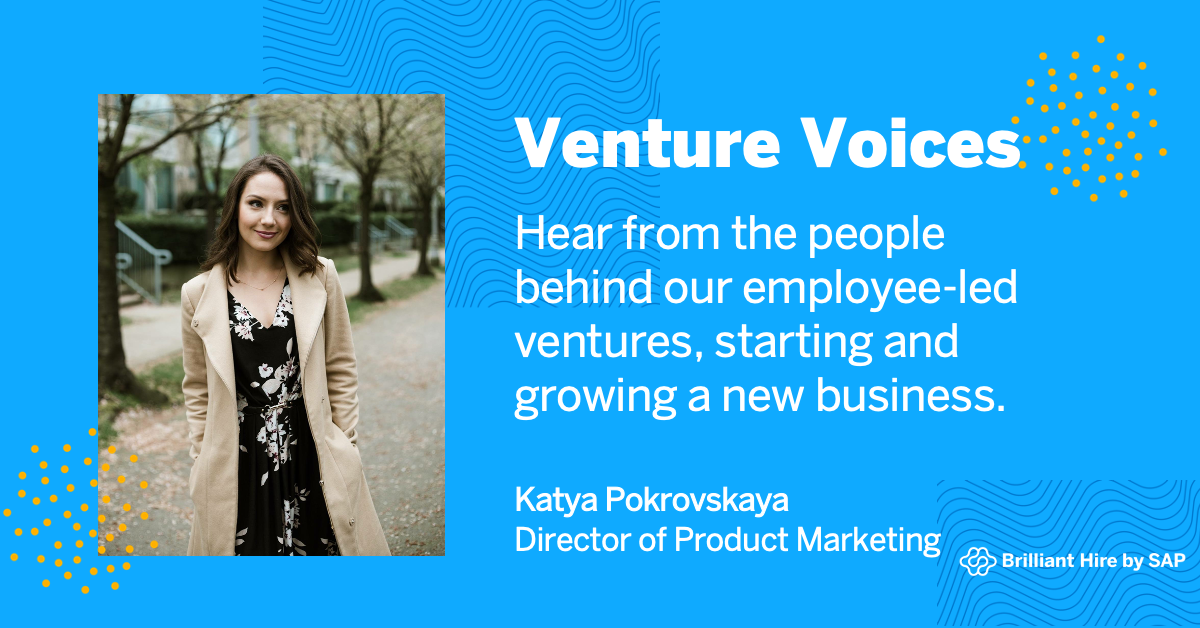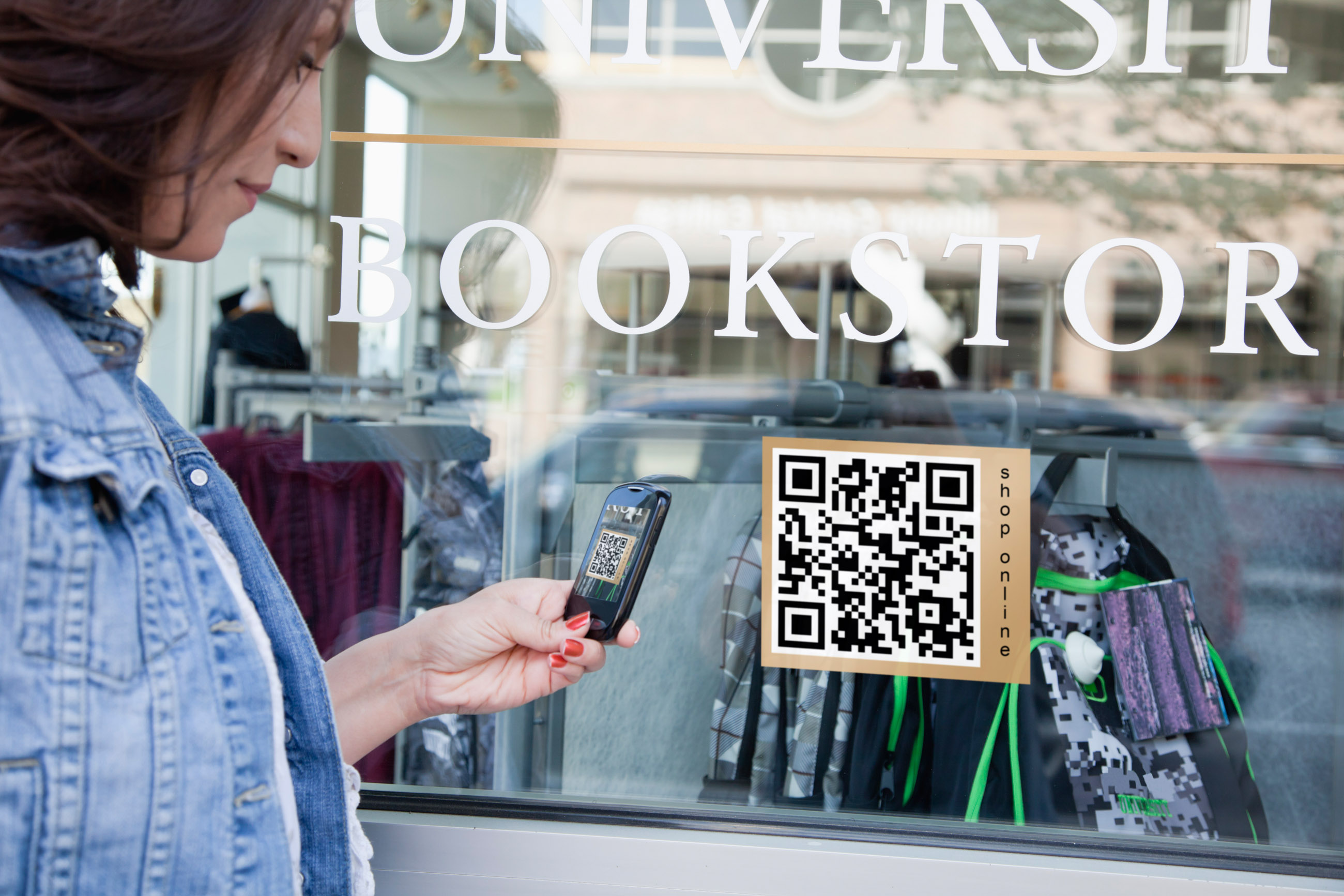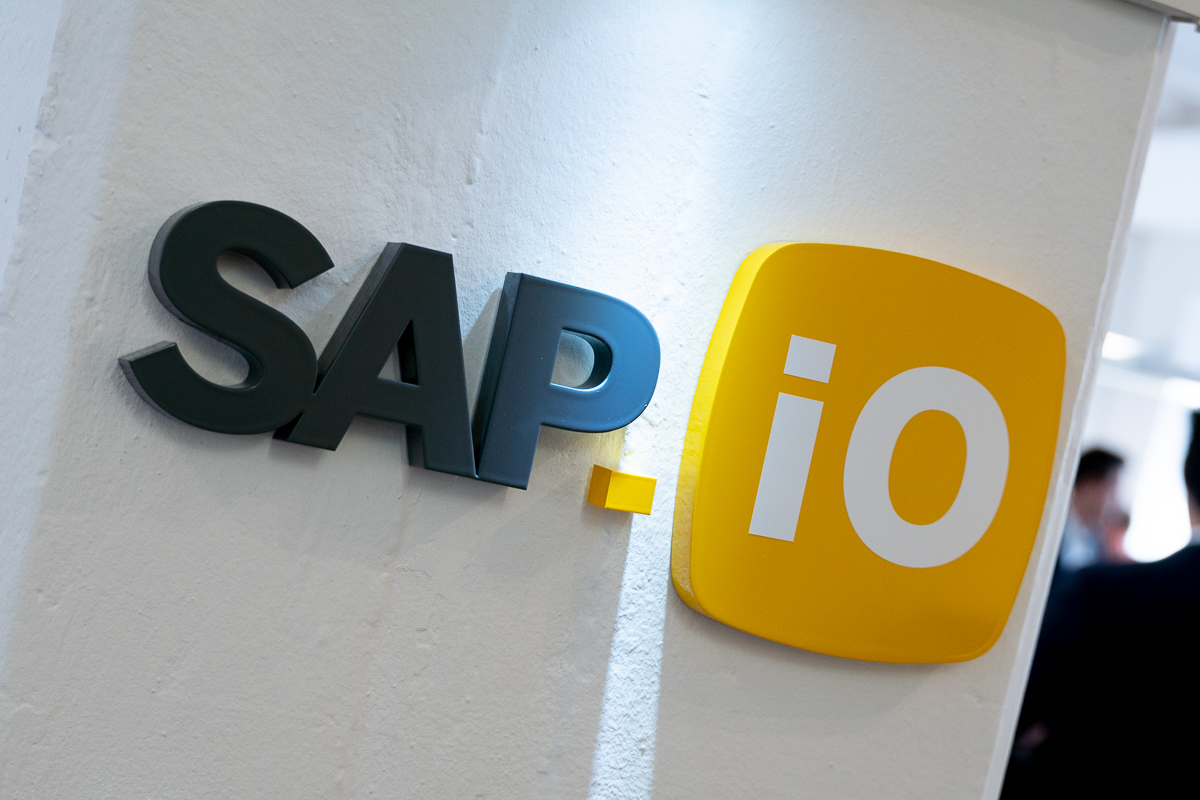Meet the 7 amazing startups from SAP.iO Foundry Tel Aviv’s Utilities cohort.
Start-up marketing, Storytelling and Co.: The Director of Product Marketing at Brilliant Hire by SAP shares some key lessons that that she has learned through the years.
By Katya Pokrovskaya, Director of Product Marketing at Brilliant Hire by SAP

Having recently made a career move, I joined Brilliant Hire by SAP as Director of Product Marketing just over a month ago. Brilliant Hire is an employee-led venture in the SAP.iO Venture Studio, SAP’s in-house incubator designed to build new growth businesses for the company. Having worked for a few early-stage software start-ups in the past, it feels great to be back in the innovation space. I wanted to share two tips that I believe are key in developing strong messaging and positioning for a SaaS start-up: building your story around your audience and communicating value over functionality.
So, why does my start-up need marketing?
As a marketer, a question that I often get asked from non-marketer colleagues and friends is “Why do we even need marketing in the first place? We’re building a great product. It should sell itself”. It’s an interesting question as there’s no doubt that a great product is the foundation for the success of a business. Organizations such as Product-Led Institute have built fantastic frameworks and entire training programs on building fast-growing SaaS businesses with a product-led approach. However, as important as product is, so is getting the word out about it in a way that will resonate with your market. Marketers exist to craft a clear, compelling story and bring it to the right people at the right time – to ultimately communicate the value of your product and drive growth.
Tip: Make your customer the hero of your (marketing) story
Who is your target audience? If you’re trying to appeal to everybody, then you’re probably not appealing to anybody. I would argue that the number one rule of marketing is this: know your audience. It starts with taking a step back from what you’re building or selling to listen and empathize with your target user and customer. Try to learn as much about them as possible to understand their unique needs and think about where you can help. Make time for qualitative research such as interviews and focus groups to build detailed buyer/user/customer persona profiles. If your product addresses a few different audiences, repeat the audience profile exercise for each one to understand all the key personas that you are positioning your product to. Ask yourself: Who are you building your product for? What problems does it solve for them? What value can it bring to their lives?
The expert knowledge you gain from empathizing with your audience should be the foundation for your marketing storytelling. Think of your marketing message as a story and your customer as the hero of the story. I recently came across an interesting framework for crafting a marketing story in a great book that I’m reading: Building a StoryBrand: Clarify Your Message So Customers Will Listen by Donald Miller. As in any story plotline, the hero (your customer) will need to overcome a challenge or obstacle. Eventually, they meet a guide (your product/service/solution) who will offer them a plan and provide a call to action to help them solve the problem. How does your product help customers overcome a challenge and make them successful?
Tip: Communicate value, not feature/function
In the fast-paced, information-saturated world that we live in, communicating value helps people quickly understand why they should care about your product. When creating marketing messaging for software, it can be easy to resort to listing the features and functions of the amazing SaaS product that you’re building. However, unless you’re targeting a highly technical customer, this approach most likely wouldn’t resonate with your audience. Instead, think about how you can help your customer: specific use cases for your product, the problems solved for the end-users and ultimately, the value that it brings. Even better, could you quantify the value to show things like time saved or ROI?
Stewart Butterfield, the co-founder of Slack, once sent a memo to his team that said: “Just as much as our job is to build something genuinely useful, something which really does make people’s working lives simpler, more pleasant and more productive, our job is also to understand what people think they want and then translate the value of Slack into their terms”.
The category of company-wide messaging software wasn’t new when Slack entered the market in 2013. However, Slack was unparalleled in translating their platform’s capabilities into a clear value proposition. By positioning themselves as a replacement for email and the place “where work happens”, Slack clearly communicates how its product makes users’ working lives simpler, more pleasant and more productive. The strong messaging and positioning, coupled with a fantastic product, powered Slack’s impressive hypergrowth.
At the end of the day, customer-centric marketing that communicates clear value will make it quick and easy for your audience to understand why they should choose your product over all of the other options out there.
Check out the SAP.iO Venture Studio website to learn more about how we drive organic innovation for SAP.
About Brilliant Hire by SAP
Brilliant Hire intelligently matches candidates with a personalized shortlist of a company’s jobs based on what really matters to them. It allows the candidates to search based on their skills, interests and passions — instead of keywords.
About SAP.iO Venture Studio
SAP.iO Venture Studio drives a new era of organic growth at SAP. It invests in new ventures founded by small, entrepreneurial teams inside of SAP who are focused on building the future of enterprise business processes. SAP.iO Venture Studio provides design, development, and sales support to help these ventures launch. Founding teams join the SAP.iO Venture Studio primarily through the SAP.iO Intrapreneurship and Entrepreneur in Residence (EIR) programs.














